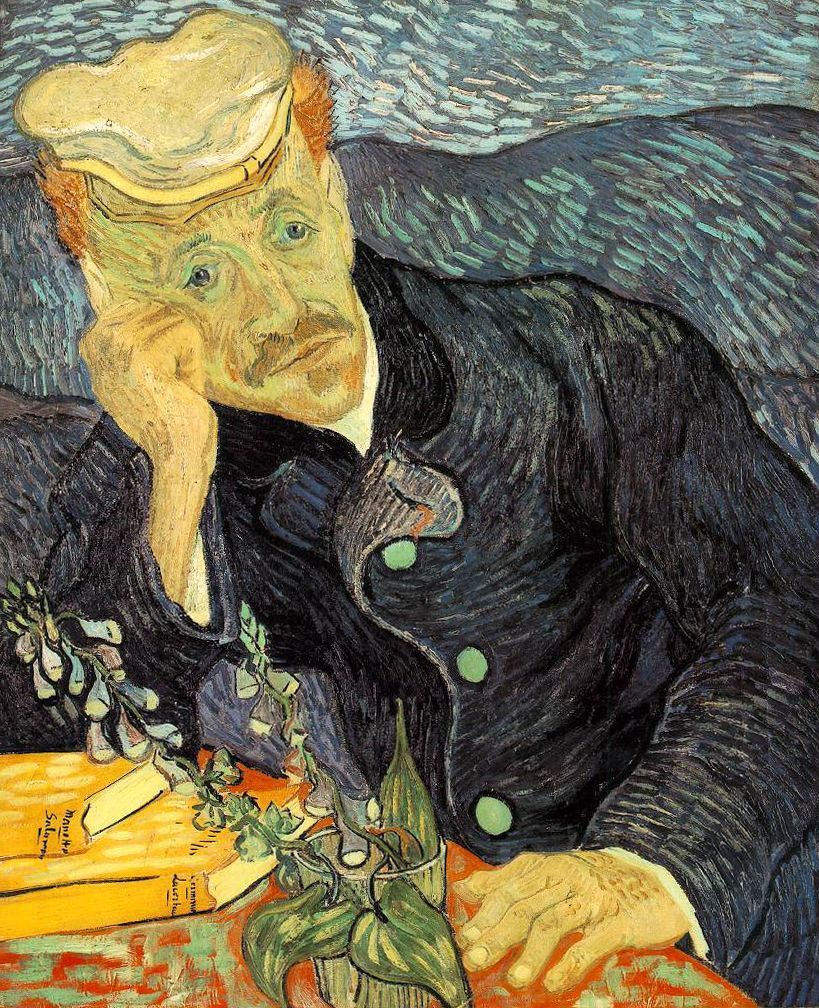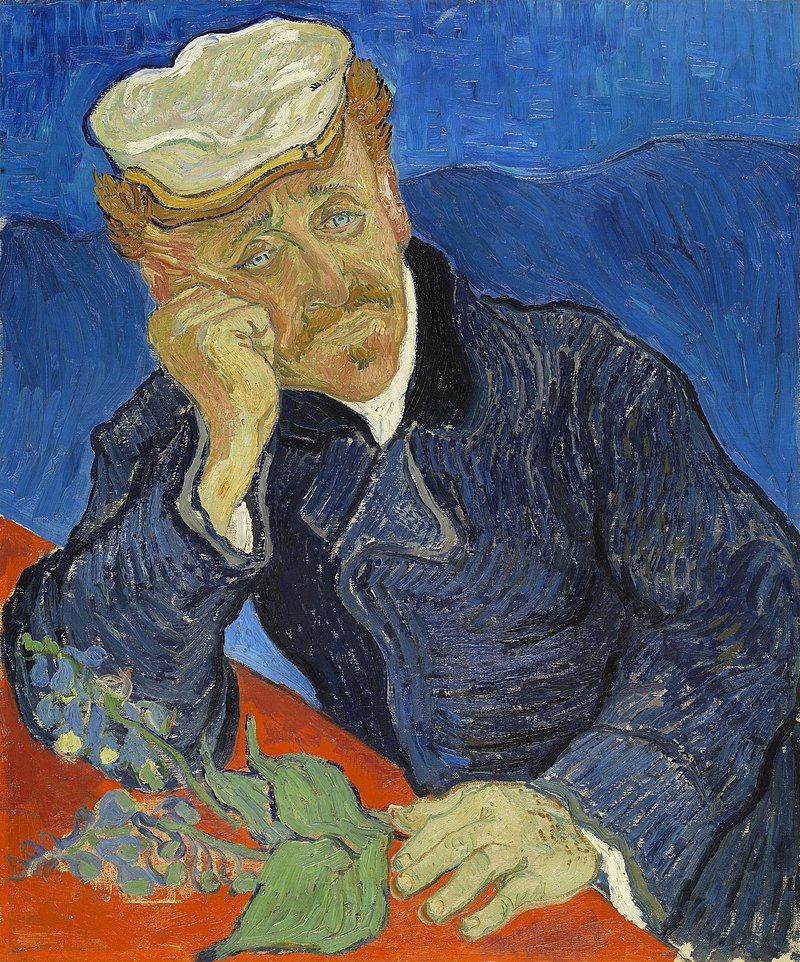Portrait of Dr. Gachet is considered as one of Vincent van Gogh’s most popular paintings alongside The Starry Night and Sunflowers. It is also one of the painter’s most expensive artworks, as it was sold to a Japanese businessman for more than $82 million in 1990. Portrait of Dr. Gachet is famous because it was one of the last paintings that van Gogh painted before he passed away in 1890, and the man in the portrait particularly had a close relationship with van Gogh during the painter’s last moments. Who is the man in the portrait? And why did van Gogh asked him to be a model for one of his paintings? All of these reasonable questions will be answered as we take a look at the interesting origin of the Portrait of Dr. Gachet.
Origins
Vincent van Gogh met the man in the painting, Dr. Paul Gochet, when he was sent to the doctor’s second home at Auvers-sur-Oise in Paris, France, in June 1890. Two years before he resided at Dr. Gochet’s home, van Gogh suffered a mental breakdown, wherein he cut off his left ear. He then stayed for a month to heal his wound; however, even if his ear was not fully healed, he voluntarily checked himself at the asylum located in Saint-Rémy-de-Provence, France. He stayed in the asylum from April 1889 up to the early months of 1890.
When he got out of the asylum, his brother, Theo van Gogh, began looking for a home where the painter can reside to have a peaceful life. It was during this search that Theo talked to Camille Pissarro, a Neo-Impressionist painter who recommended that Vincent should stay at a home owned by his former homeopathic doctor, Dr. Paul Gachet, who is noted for having fondness of treating and working with painters. After the recommendation, Theo sent his brother to Dr. Gachet’s second home.
When Vincent van Gogh first met the doctor, he did not like him at all. In fact, he even wrote to his brother that Dr. Gachet is sicker than he is, and if the doctor is sick, then there is no way that he will be able to treat the painter’s illness. However, his impression of the doctor changed two days later, as he was quoted in a letter sent to his sister Wilhelmina that he found a true friend that bears physical and mental similarities with him.
It was during Vincent’s stay at Dr. Gachet’ second home that he was able to create the most number of paintings in his career, which is believed to have been more than 70. Three of these paintings that he created in that stay were the three versions of the Portrait of Dr. Gachet. These portraits were created six weeks before Vincent van Gogh passed away due to a self-inflicted bullet wound in the chest on July 27, 1890.
Versions
As previously stated, there were three versions that Vincent van Gogh created for the Portrait of Dr. Gachet. The first version was created in 1890 and was sold by Vincent’s sister-in-law in 1897 for only 300 francs. Between 1897 and 1910, it has been owned by three people, including German art dealer Paul Cassirer. It was then bought by the Städel Museum, which is located in Frankfurt, Germany, in 1911. It remained in possession of the museum until 1937, although it was only in display until 1933 since the owners of the museum had to place it in a hidden room. They had to hide the painting, as well as many other artworks, as the Reich Ministry of Public Enlightenment and Propaganda began confiscated artworks that are considered “degenerate.” Unfortunately, the portrait was confiscated in 1937, but it was sold “under the table” by Hermann Göring to art collector Franz Koenigs in 1939. The painting was sent to Koenings in Paris, and it was then transferred to New York.
The painting remained in the hands of another art collector named Siegfried Kramarsky and his family from 1940 up to 1990. It was during the said period that the portrait would often be seen displayed at the Metropolitan Museum of Art. The family of Kramarsky then put up the portrait for auction at Christie’s New York on May 15, 1990. It was during that auction when the painting was sold for more than $82 million to Ryoei Saito, who is the honorary chairman of the Daishowa Paper Manufacturing Co. As to what he will do to the painting, Saito once stated that he would have the portrait cremated with him when he passes away. However, Saito also was quoted in saying that he might just give it to the Japanese government or a museum in Japan. Unfortunately, the current whereabouts of the painting remain unknown after Saito’s death in 1996. Investigations as to where the painting could be are still ongoing.
The second version of van Gogh’s Portrait of Dr. Gachet was given to the doctor by van Gogh. Gachet and his family owned the portrait, along with other paintings that belong in the doctor’s private collection, until the 1950s, when the collection was given to the Republic of France.
There have been many theories surrounding the authenticity of the second version, with some believing that it was just a copy that was painted by Gachet. This “copy” theory was further emphasized by the fact that Dr. Gachet and his son were amateur painters who created copies of Post-Impressionist painting as a pastime. In addition, there was also a theory that most of the paintings created by van Gogh during his stay at Dr. Gachet’s house were not actually his but the doctor’s, since many argued that van Gogh couldn’t have produced more than 70 paintings due to his mental illness in that period. However, the speculation that the second version was a copy was debunked when the Musée d’Orsay conducted an in-depth analysis of the portrait in 1999, and they found out that the markings, pigments, and strokes in the painting are similar to what is seen in van Gogh’s other paintings.
The third version of the portrait is not a painting but an etching of Dr. Gachet. The doctor is known to have been a prolific etcher, and it is believed that Dr. Gachet taught van Gogh how to etch in 1890. The etching is currently in the National Gallery of Canada.


